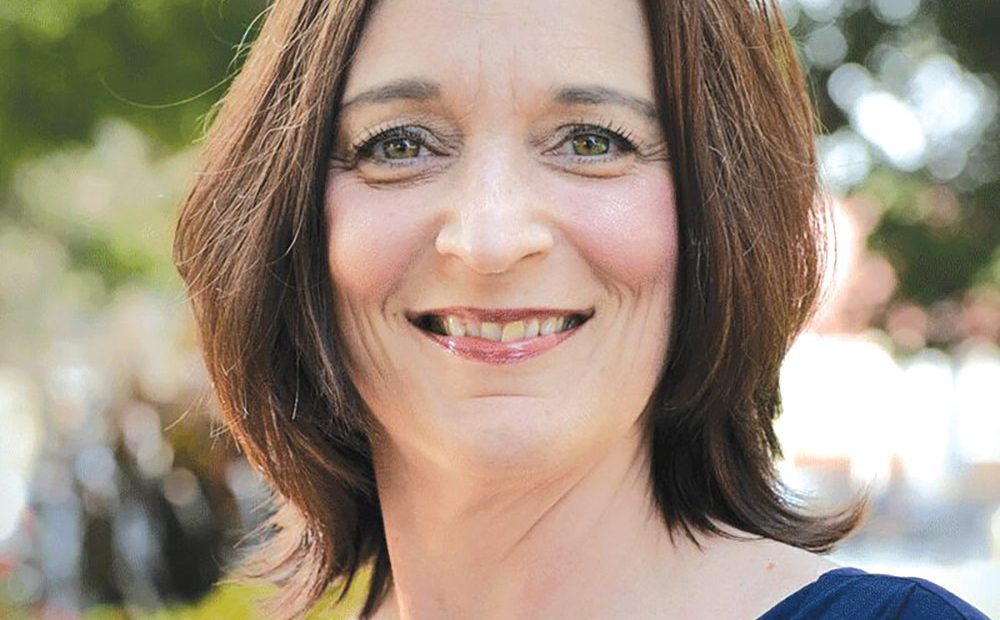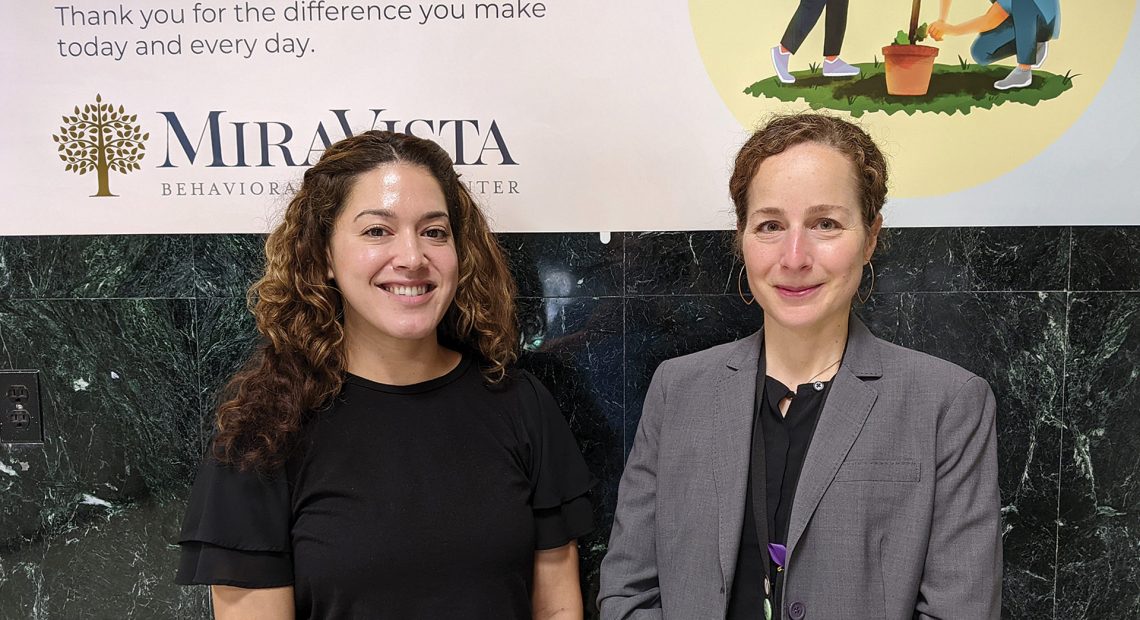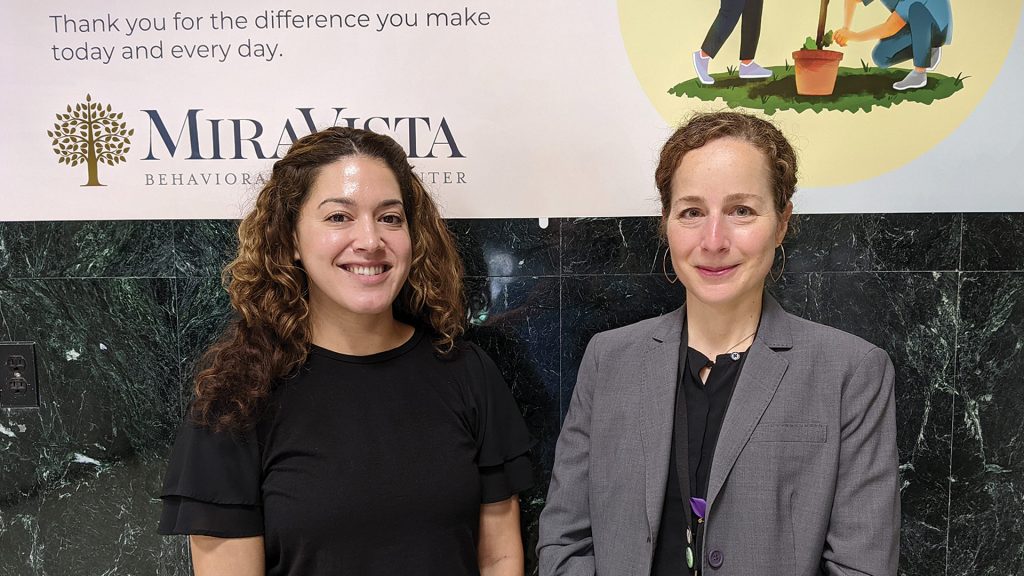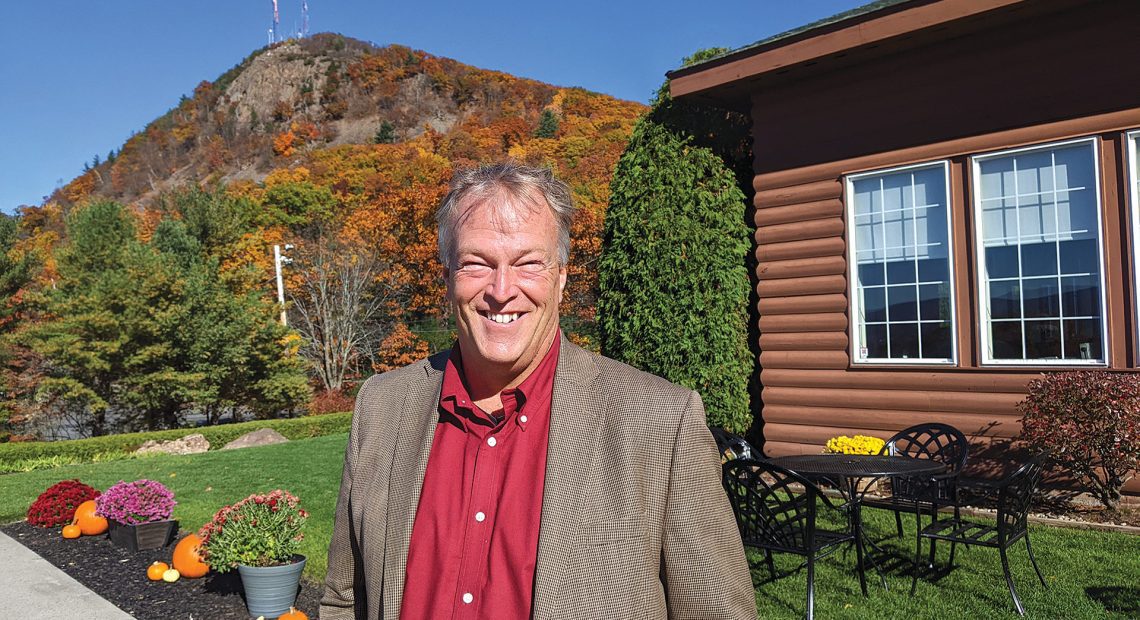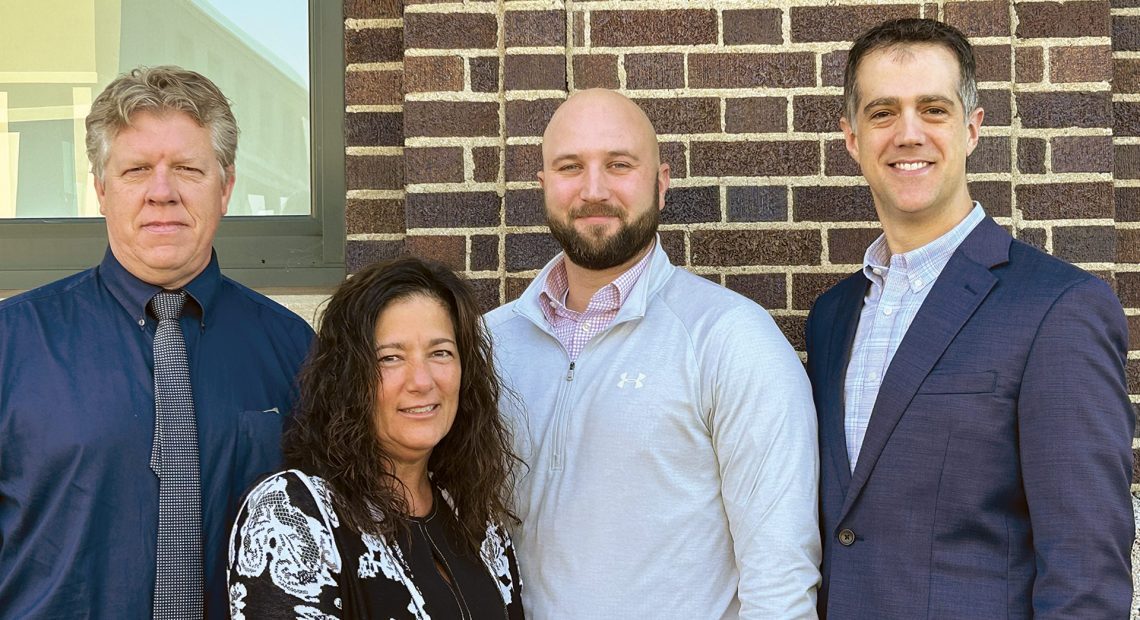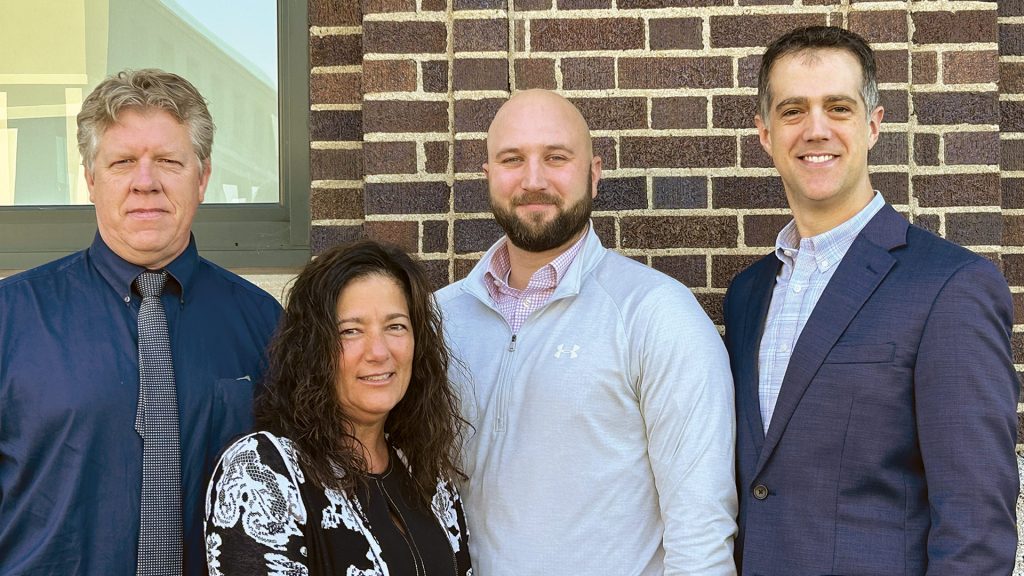Community Spotlight

Pittsfield Mayor Linda Tyer says the city has made great strides when it comes to growing and diversifying an economy once dominated by GE.
It’s called ‘Site 9.’
This is a 16-acre parcel within the William Stanley Business Park, created at the site of the massive General Electric transformer manufacturing complex in Pittsfield, which closed nearly 30 years ago.
The site has been available for development for more than two decades now, said Linda Tyer, Pittsfield’s mayor for the past seven years, but there have been no takers because, in a word, this site is ‘intimidating.’
“Every time we host a business and we identify this as a potential location, they look at it, and they’re instantly intimidated because of the condition that’s in,” she explained. “It’s a big scar in the heart of our community that’s a remnant of our past. People have looked at it, and they’ve just said, ‘I can’t envision my business here.’”
Gov. Charlie Baker was in the city a few weeks ago to hand-deliver a $3 million check that might change this equation. The money will go toward infrastructure work, putting new roads in, greening the space, and other measures that will make this parcel more shovel-ready and, ultimately, a part of this city’s future, not merely its past.
“If we don’t get any interest for the next 10 years, at least it’s not this giant wound in the heart of our city,” Tyer went on, adding she is expecting plenty of interest in the years to come.
Site 9 is where we begin our look at Pittsfield, the latest installment of BusinessWest’s Community Spotlight series. This is a city that has been trying to move beyond its past, and the dominating influence of GE on just about every facet of everyday life, since the company left. And in many ways, it has been making great progress.
Its economy is far more diverse and far less dependent on one company or one sector, said Tyer, adding that this was quite necessary given the devastation and outmigration that occurred when GE pulled up stakes. Today, the city boasts a few large employers — such as Berkshire Health Systems and General Dynamics — but the economy is dominated by small businesses across several sectors including manufacturing, IT, healthcare, and especially tourism, hospitality, and the arts.
Those latter categories now provide a good number of jobs and have contributed to a rebirth of North Street, the main thoroughfare in the city, after it was decimated by GE’s departure, said Jonathan Butler, president and CEO of 1Berkshire, a county-wide organization focused on economic development and promotion of the region.
“The Pittsfield of 2022 is a completely different city than it was 20 years ago,” he said, adding that a strong focus on the arts and hospitality has changed the narrative in this community.
The pandemic obviously took a heavy toll on these businesses and the overall vibrancy of Pittsfield, said Butler, but it has managed to come almost all the way back this year, with the arts venues rebounding and hospitality venues back to something approaching normal.
James Galli, general manager of the Hotel on North, so named because it is on North Street, agreed. He said the hotel is on pace to have its best year since opening in 2015, and the mix of guests that it attracts provides some good insight into Pittsfield and what now drives its economy.
“The Pittsfield of 2022 is a completely different city than it was 20 years ago.”
“We get a lot of travelers coming in from Boston and New York to go to Barrington Stage and the Colonial Theatre,” he said, citing two of the main cultural draws in the city. “We get a lot of millennials coming in for hiking and the beauty of the area, some business travelers coming in for General Dynamics and some of the area businesses in town — and it’s a good mix. We are the center of the Berkshires, so we get people staying with us for two, three, four days at a time; they’ll go down to South County or up to North County or into the Pioneer Valley, but they’ll stay with us because we’re very central and they can do a lot more if they stay with us.”
In some ways, the pandemic has actually benefited the Berkshires and especially its largest city, said those we spoke with, noting that the remote-work phenomenon has made it possible for those working for businesses in New York, Boston, and other expensive metropolitan areas to do so from virtually anywhere.
And with its high quality of life and (comparatively) low real-estate prices and overall cost of living, Pittsfield has become an attractive alternative, said Tyer, noting that the city is in the midst of a housing boom that has slowed only slightly even in the wake of rising interest rates and persistently high prices.
The Next Chapter
It’s called the ‘Library Suite.’
This is the largest suite among the 45 guest rooms at Hotel on North, and easily the most talked about. That’s because, as that name suggests, it’s decorated with books — some 5,000 of them by Galli’s count.
“There’s a moveable ladder, and … it looks like a library,” he told BusinessWest. “There’s everything from full sets of encyclopedias to children’s books, the Harry Potter collection; we’ve found them at tag sales over the years and made it into a unique, different type of room. It speaks for itself.”

Jonathan Butler
“Pittsfield has benefited from planting its flag in the cultural and arts scene in the Berkshires; that’s a huge part of our growing economy and has been for the past 10 to 15 years.”
The library suite, which boasts about 850 square feet and goes for as much as $700 a night, depending on the season, has been occupied most every night over the past several months, said Galli, noting, again, that visitors of all kinds are coming back to Pittsfield, and to this hotel, which was created out of two historic buildings on North Street.
Business started to pick back up in June 2021 as the state essentially reopened, he said, and momentum continued to build into this year, which has yielded better numbers than the years just prior to the pandemic.
He attributes this to many factors, including some pent-up demand for travel and vacations as well as the unique nature of the hotel, which has several different kinds of rooms, each of them is unique.
“A lot of people are looking for a hotel that’s a little different — a boutique or independent hotel,” he said. “There’s a clientele that goes for the branded properties, but the people who stay with us are looking for that unique experience when they walk in the door.”
But Galli also credits Pittsfield’s resurgence in recent years, especially its cultural attractions and other quality-of-life attributes, making the city a destination for people of all ages.
Hotel on North is part of a new look and feel on North Street, said Butler, noting that the well-documented vibrancy of the GE chapter in the city’s history was followed by the dark and dismal time that he grew up in: “North Street was not a place to be in the ’90s.” The vibrancy has returned in the form of cultural attractions and new restaurants and bars.
“Pittsfield has benefited from planting its flag in the cultural and arts scene in the Berkshires; that’s a huge part of our growing economy and has been for the past 10 to 15 years,” he told BusinessWest. “You have investments like Berkshire Theatre Group with their theater in downtown Pittsfield, and Barrington Stage Company, which has become a major anchor, as well as a number of smaller cultural offerings and pop-ups and galleries in downtown Pittsfield.
“And this has been further bolstered by the emergence, over the past eight to 10 years, of a vibrant food scene — an exciting, trending type of food environment,” he went on, citing establishments, new and old, like Methuselah Bar and Lounge, Berkshire Palate (located in Hotel on North), Pancho’s Mexican Resaurant, Trattoria Rustica, Flat Burger Society, Patrick’s Pub, and Otto’s Kitchen & Comfort.
“There’s some finer dining options — downtown Pittsfield’s a great place to go host some clients if you’re a business or to have a good date night as a couple or a fancy night out with friends,” Butler explained. “But there’s also a lot of great casual offerings in downtown Pittsfield; there’s some great pubs, some great cocktail lounges. There’s also a lot of immigrant-owned businesses in downtown Pittsfield, which adds to the diversity and provides a more rich experience.”
At Home with the Idea
This diversification and strengthening of the city’s economy has become the main economic-development strategy for Tyer since she became mayor.
“I have some family history with General Electric — my great-grandparents were part of the GE economy,” she told BusinessWest. “And when I became mayor, I felt strongly that the economy cannot be dependent on one sector; my priority has been that we have diversity in the economy, and that includes everything from the travel, tourism, and hospitality sector to the cultural economy, and it also includes manufacturing and science and technology.”
To attract businesses across all these sectors, and to help existing companies expand, the city has created what Tyer calls its ‘red-carpet team,’ a name that hints strongly at its mission.
Pittsfield at a glance
Year Incorporated: 1761
Population: 43,927
Area: 42.5 square miles
County: Berkshire
Residential Tax Rate: $18.56
Commercial Tax Rate: $39.90
Median Household Income: $35,655
Median family Income: $46,228
Type of Government: Mayor, City Council
Largest Employers: Berkshire Health Systems; General Dynamics; Petricca Industries Inc.; SABIC Innovative Plastics; Berkshire Bank
* Latest information available
“We want to make sure that businesses that are here now, that are homegrown and might want to expand into a new market, expand their facilities, or grow their employment base, have the same level of support from the city of Pittsfield as we would give to a new business that wanted to start up in the city,” she explained. “We’ve been successful at balancing that approach.”
The red-carpet team consists of a number of city department leaders who work collectively to help counsel and guide a new or existing business toward fulfillment of whatever goal they might have. This integrated process enables a CEO to have one meeting, rather than several, said Tyer, adding that having everyone seated around one table enables the city to be more responsive and move more quickly.
And, overall, there have been a number of interested parties, she said, noting that the Berkshires, and Pittsfield, has a lot to offer employers, including quality of life and lower cost of living, as well as a population that is stabilizing, rather than declining, as it had been for decades.
“We have great neighborhoods, we’re still affordable, and we have beautiful outdoor recreation,” she said. “The combination of all of that is the magic that Pittsfield has going into the future.”
Much of this magic became even more forceful during the pandemic, said those we spoke with, noting that, while most hospitality-related businesses had to shut down for an extended period, the Pittsfield area’s outdoor recreation and quality of life came more into focus for many looking to escape what COVID brought with it.
The hiking trails became even more popular, and the Berkshires — and its largest city — became an attractive alternative for those looking to escape larger cities, their congestion, and their higher costs.
“Our housing market has been on fire,” said Tyer, noting that many professionals from Boston, New York, and other major cities have moved to the Berkshires. “And I think it speaks to this phenomenon that people can be employed by a Boston firm but work from home here in Pittsfield and have all the amenities and quality of life of a small city in a beautiful region of the state.”
The housing market shows no signs of slowing, said those we spoke with, despite rising prices and, more recently, soaring interest rates as a result of Fed action to stem the tide of inflation.
“There’s still this competition, these bidding wars, for homes,” Tyer said. “And the seller is still selling; the market hasn’t really slowed down.”
This phenomenon has led to an increase in the value of homes across the city, she went on, adding that this brings benefits on many levels — everything from the city’s bond rating to its tax rate. It also creates some problems for first-time homebuyers and those looking to trade up, and rising prices within the rental market as well, creating shortages of what would be considered affordable housing.
But in the larger scheme of things, these would be considered some of those proverbial good problems to have, said the mayor, especially in a city that had seen so much hardship over the previous 30 years.
The General Idea
The sports teams at Pittsfield High School are still nicknamed the Generals, said Tyer, adding that this just one of the myriad ways to measure the influence that GE had in this city for the better part of a century.
But while the city can still pay homage to its past in this and other ways, it has managed to move past it in almost all others.
Yes, Site 9 and many other parcels that were part of the massive complex remain undeveloped, but overall, Pittsfield and its economy have moved on. It took some time, as it does when a city loses an employer of such magnitude, but the city’s economy, like North Street itself, has been reinvented, and vibrancy has returned.
“We’ve overcome that group depression that we all suffered, and I think there’s a lot of excitement around the art and culture economy; the small-business, science, and technology economy; and some long-standing businesses that have grown since my time in public service,” she told BusinessWest. “I think we’ve overcome the ‘we’re a dying community because we lost GE’ sentiment, and I think we’re a growing, emerging community.”
George O’Brien can be reached at [email protected]



